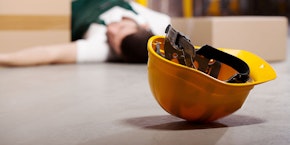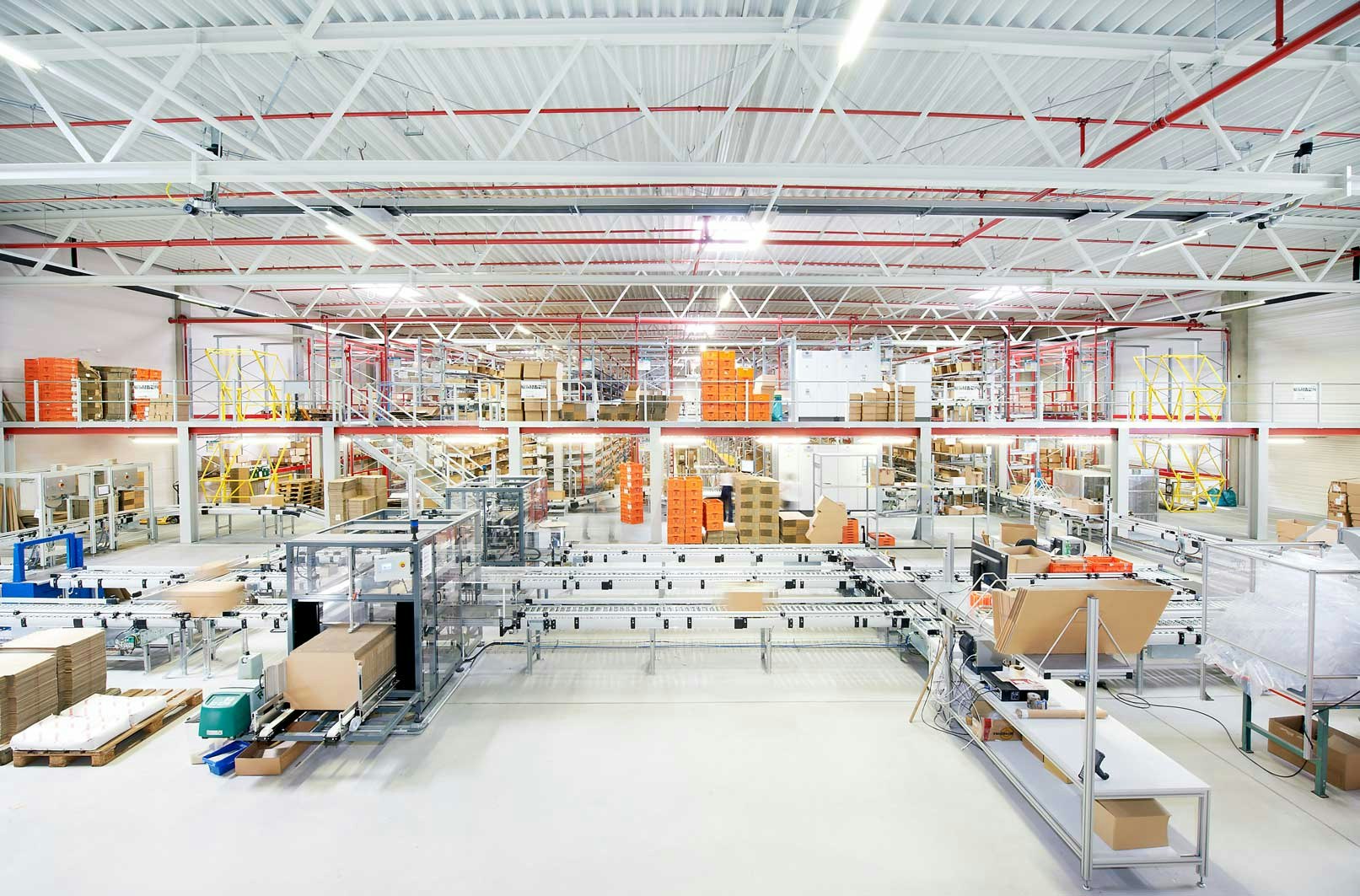Avoiding accidents in warehouses

The numbers relating to accidents at work are sobering. Figures quoted here refer to Germany, but they are a reminder of the dangers that exist everywhere. In 2019, 871547 work accidents occurred in Germany according to the German Social Accident Insurance (DGUV), resulting in 497 fatalities. 13362 cases were classified as serious accidents at work, in which a pension or death benefit was paid to the insured. In the same year, there were 87541 accidents at work during the manual transporting of goods and a further 154570 accidents during the manual handling of objects. Within the warehouse work environment there are numerous potential sources of danger ranging from racking and machinery to conveyors. In Germany, there are now numerous sections in industrial safety laws and regulations that need to be followed by both employer and employee. This requires that a company’s internal occupational health and safety organisation is in place and functioning properly.
Types and causes of occupational accidents
Accidents often happen due to carelessness on the part of the employees, disregard for safety precautions, a lack of training or a lack of maintenance of the equipment used. Equally, a lack of occupational safety guidelines in a company can lead to avoidable accidents in the warehouse area. It is not unusual for employees to suffer serious injuries due to a lack of suitable personal protective equipment (PPE). Objects can cause serious injuries if they fall from shelves or if employees lose control when lifting loads. Moisture, dirt and sand can cause workers to slip or trip and fall over misplaced or unmarked items. Falls from high working platforms are also not uncommon. Accidents with forklift trucks or other industrial handling equipment often lead to more serious injuries. In addition, an industrial truck accidentally starting and driving into shelving, can cause it to collapse or objects to fall off. In all these cases, the employer has a duty to take appropriate measures to prevent accidents at work.
Legal regulations to prevent accidents
The Health and Safety at work Act outlines the duties of employers to protect employees from occupational accidents and work-related illnesses and to ensure that the workplace is safe. This includes the design of the workplace and the working environment as well as the design of work procedures, workflow and organisation. The employer has to determine which occupational safety and security measures are necessary to avoid accidents by means of the risk assessments.
The German DGUV regulation 208-043 "Racking Safety" provides important information on the prevention of accidents at work for all commercially used steel racking & shelving. It lists the most important European standards regarding construction and equipment regulations and goes into more detail about the requirements of DIN EN 15 635 "Steel fixed racking systems - use and maintenance of storage equipment". In particular, the document deals with the regular inspection of steel racking systems for damage, inspection by competent persons, classification of damage, condition of protection barriers, loads, repair and how to improve safety in the warehouse.
Employers are obliged to regularly inspect racking systems that are loaded with industrial trucks or are positioned where such equipment is used, or to have them inspected annually by a competent person. This applies to drive-in racking, drive-through racking, flow racking, shelving, cantilever racking, multi-tier systems, pallet racking and mezzanine floors. From this checking procedure it should be possible to derive comprehensive protective measures for damaged racking.
DGUV Information 208-043 "Racking Safety" is of particular importance for the prevention of industrial accidents. Under point 4.7 it states: "At the corner areas of racking which is loaded or unloaded with non-guided conveyors, a collision guard must be installed which is anchored to the floor and must not be connected to the rack uprights. The height of the collision guard must be at least 400mm. Point 8 "Increasing safety in the warehouse" recommends collision protection devices for all uprights.
Preparation of a risk assessment
Under the Management of Health and Safety at Work Regulations, company owners or employers must assess the hazards that arise before using work equipment. However, only principles are outlined, the law does not specify in detail how a risk assessment is to be carried out.
It is necessary to:
Identify what could cause injury or illness (hazards)
Decide how likely it is that someone could be harmed and how seriously (risk)
Take action to eliminate the hazard, or if not possible, control the risk
Organisation of occupational safety and training of employees
An essential basis or building block for the prevention of accidents is the training and awareness of employees in all relevant topics of occupational safety. There are well-prepared materials available that can be used in internal training courses. The safety regulations and guidelines for accident insurance are also continuously adapted to the sources of danger in the warehouse in order to prevent accidents at work. The control and monitoring of compliance with the rules to prevent industrial accidents is no less important. This management task is the responsibility of the operational management in the warehouse. The employees in the company need to feel that the company takes occupational safety seriously and punishes violations consistently. Occupational safety must be organised in cooperation with management, employee representatives and, potentially, occupational physicians. External experts are on hand to provide advice and assistance in preventing accidents. However, the most important thing is for industrial safety to be an integral element of a company’s operation.
Tips for avoiding accidents at work
In addition to complying with legal regulations to prevent accidents and preparing a risk assessment, racking systems must also be inspected regularly by specialists (safety officers). Regular visual inspections in addition to the annual racking inspection help to detect collision damage at an early stage. All shelf damage must be documented and inspection labels provide information on the necessary maintenance intervals.
Shut-off devices, impact protection and other protective systems serve as simple but effective measures for more safety in operational processes and the prevention of accidents. Examples include impact protection (corner and edge protection profiles, solid surface protection, pipe protection profiles, straight or corner impact protection bars, safety markings, barrier systems for separating traffic and work areas.
As described above, certain impact protection devices, warning and shelf protection profiles and barriers are required by law. Still others serve to generally increase safety - such as the before mentioned column protection devices. Impact protection and warning profiles can be used to prevent serious accidents and damage as well as injuries to inventory and employees. In an operational environment, they are used on internal transport routes to prevent accidents, and also applied to the corners & edges of machines and vehicles.
Another tip are floor marking tapes or floor marking paints, which can be used to visibly separate driveways and footpaths by the employer to prevent accidents. It is also important to ensure that the width of the driveways is sufficient. Corresponding specifications are given in the laws and regulations cited above. Anti-slip tapes or coatings also reduce the risk of slipping on wet or greasy surfaces. There are also rules for the use of forklift trucks and other industrial trucks, meaning, for example, that the use of vehicles by unauthorized persons or driving with a lifted load is not allowed.
Individual work safety equipment exists nowadays in many variations and helps to reduce the danger of accidents. Supporting exoskeletons can facilitate the repeated lifting of heavy loads and thus prevent accidents and injuries for the employee. Thanks to the latest sensor and actuator technology, heavy work becomes much easier and back-friendly. Particularly on the assembly line and when packing, work often has to be carried out for long periods of time with the body slightly bent forward, which, over time, puts a lot of strain on the lumbar vertebrae. Especially when lifting out heavy loads and removing goods from floor spaces in the order picking area, the back is put under a lot of strain.
Even though all measures can be taken to reduce the risk of accidents, job-specific first aid kits should always be easily accessible on site. First-aiders in the company need to be specially trained for first aid in industrial accidents and have regular refresher training.


